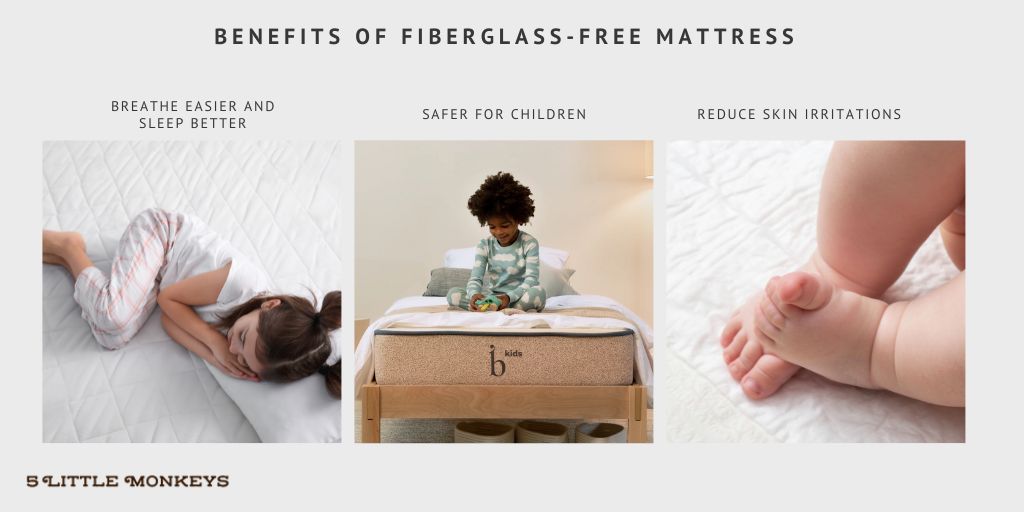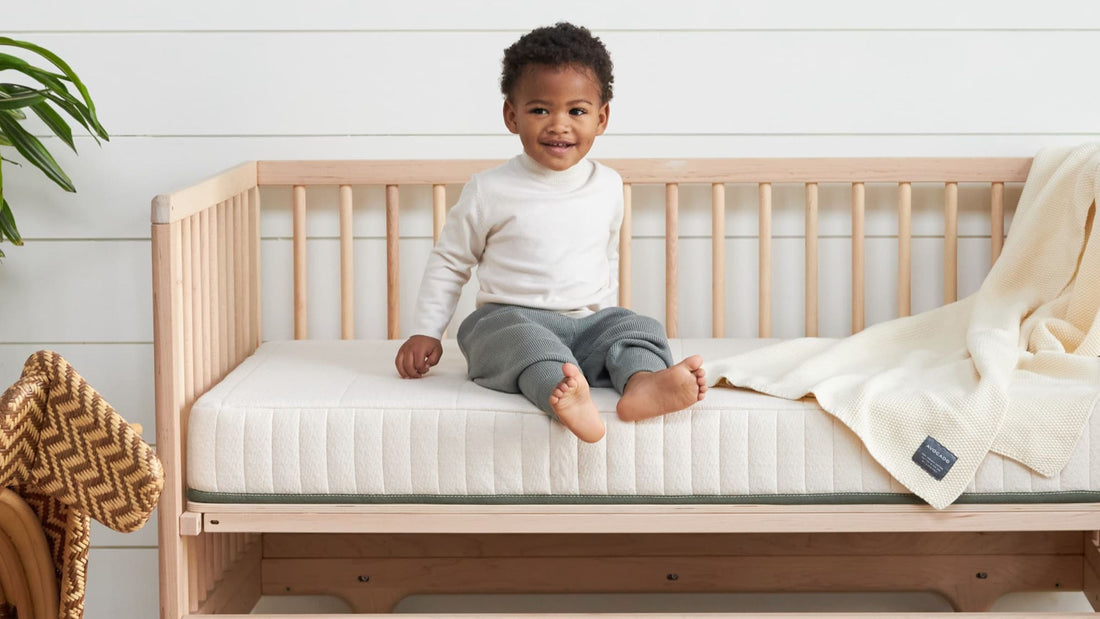In recent years, the issue of fiberglass in mattresses has gained significant attention due to potential health concerns and safety hazards. Fiberglass, a synthetic material known for its durability and insulating properties has been commonly used in mattress construction. However, fiberglass particles pose risks, particularly when exposed, leading to skin irritations and respiratory issues. In response to these concerns, fiberglass free mattresses have emerged as a safer and healthier alternative for sleepers seeking peace of mind and comfort.
What Is Fiberglass?
Fiberglass is a composite material made from fine fibers of glass woven together to form a flexible fabric or used as a reinforcing agent in various polymer products. It is known for its strength, durability, and versatility, making it popular for multiple industry applications.
Fiberglass exhibits excellent thermal and electrical insulation properties, corrosion resistance, and high tensile strength, suitable for use in diverse fields such as construction, automotive, aerospace, marine, and manufacturing. In addition to its utility in structural components and reinforcement, fiberglass is employed in insulation, textiles, composites, and as a fire-retardant material in certain consumer products like mattresses.
What Are Fiberglass Mattresses?
Fiberglass mattresses are bedding products that incorporate fiberglass components into their construction. These mattresses typically feature a layer of fiberglass material, often woven into a fire-resistant barrier, to enhance safety and comply with flammability standards. The fiberglass layer acts as a protective shield, helping to prevent the rapid spread of flames in the event of a fire.
Fiberglass mattresses are designed to meet regulatory requirements for fire resistance, particularly those established by organizations like the Consumer Product Safety Commission (CPSC). By incorporating fiberglass into their construction, manufacturers can create mattresses less prone to ignition and contribute to fire containment, reducing the risk of fire-related injuries and property damage.

Benefits of a Fiberglass Free Mattress
The best fiberglass free mattresses offers several advantages over traditional mattresses that contain fiberglass components:
Breathe Easier and Sleep Better
Fiberglass free mattresses eliminate the risk of fiberglass particles shedding from the mattress surface, leading to a cleaner and healthier sleeping environment. Without fiberglass, there's no concern about inhaling or being exposed to tiny glass fibers, allowing for improved indoor air quality and good health. As a result, individuals can breathe easier and experience more restful sleep without the discomfort or irritation associated with fiberglass exposure.
Safer for Children
Fiberglass free mattresses are particularly beneficial for children's beds, as they eliminate the potential health hazards of fiberglass exposure. Children more susceptible to respiratory issues and skin sensitivities can sleep safely and comfortably on a mattress free from fiberglass particles. Parents can have peace of mind knowing that their child's mattress is free from harmful materials and provides a safe and supportive sleeping surface.
Reduce Skin Irritations
Fiberglass free mattresses are gentler on the skin, reducing the risk of skin irritations, itching, or allergic reactions that may occur with fiberglass exposure. Without fiberglass components, there's no risk of abrasive fibers coming into contact with the skin, minimizing the likelihood of discomfort or irritation, especially for individuals with sensitive skin conditions. By choosing a fiberglass free mattress, individuals can enjoy a more comfortable and soothing sleep experience without worrying about skin reactions or itching.
Why is Fiberglass Used in Mattresses?In 2007, the Consumer Product Safety Commission implemented stringent regulations regarding the flammability of mattresses to enhance consumer safety. This mandate, known as the Standard for the Flammability (Open Flame) of Mattress Sets, aimed to establish federal safety standards for mattresses to mitigate the risk of fire-related incidents. The CPSC recognized the importance of minimizing the spread of flames in the event of a fire, particularly in products such as mattresses commonly found in households.
Per the CPSC standards, mattresses must meet specific criteria for open-flame fire resistance to ensure they can withstand exposure to flames without rapidly igniting or contributing to the spread of fire. Fiberglass, with its inherent fire-resistant properties, emerged as a viable solution for enhancing mattress safety and compliance with these regulations. By incorporating fiberglass components into mattress construction, manufacturers can create a barrier that helps prevent flames from engulfing the mattress and spreading to other areas.
How do you know if a mattress has fiberglass?To determine whether a mattress contains fiberglass, follow these steps:
Check the Manufacturer's InstructionsReview the manufacturer's product information to see if fiberglass is listed as a component or material used in the mattress's construction. Manufacturers typically disclose the materials used in their products, including any fire-resistant components like fiberglass. Also look for certifications such as GoldGuard, which 5 Little Monkeys is proud to be fiberglass free certified by.
Check the LabelInspect the mattress label for information on materials and composition. Look for terms such as "fire-resistant barrier" or specific mentions of fiberglass. The label should provide insights into the mattress's construction and any fire safety features incorporated into its design.
OriginConsider the country of manufacture or origin when assessing the likelihood of fiberglass in a mattress. Some regions have stricter regulations regarding fire safety standards for bedding products, potentially influencing the use of fiberglass as a fire-resistant component.

Shop Organic
Opting for mattresses with organic materials can reduce the likelihood of fiberglass exposure, as these mattresses typically prioritize natural materials and avoid synthetic additives.
If you're looking for an organic option that minimizes exposure to harmful chemicals, including fiberglass, consider mattresses with UL GREENGUARD Gold certification. This certification is standard for low volatile organic compound (VOC) emissions into indoor air.
What Should We Do If Our Mattress Has Fiberglass?If you find fiberglass in your mattress, it's essential to take the following precautions:
- Don't Remove the Cover: Avoid tampering with the mattress cover or attempting to remove fiberglass components yourself, as this may release fiberglass particles into the air.
- Use a Mattress Cover: Consider using a protective mattress cover or encasement to contain fiberglass particles and create a barrier between the mattress and sleeper.
- Replace the Mattress: If fiberglass exposure becomes a concern, consider replacing it with a fiberglass free alternative for a safer and healthier sleep environment.
In conclusion, fiberglass free mattresses offer numerous benefits, including improved air quality, enhanced safety and reduced skin irritations. By opting for a mattress free of fiberglass components, sleepers can enjoy a more comfortable and healthier sleep experience. Prioritizing mattress safety and choosing fiberglass free options can contribute to better overall well-being and peace of mind.
FAQs about Fiberglass Free MattressWhy Do Mattresses Have Fiberglass?
Mattresses may contain fiberglass components like fire retardant layers to meet flammability standards and enhance safety.
Is it Safe for a Mattress to Have fiberglass?
While fiberglass can improve fire resistance in mattresses, its presence may pose risks if exposed, leading to skin irritations and respiratory issues.
Where is Fiberglass Located Inside a Mattress?
Fiberglass is typically found beneath the mattress fabric cover or encased within the mattress layers, serving as a fire retardant barrier.
Do All Mattresses Have Fiberglass In Them?
Not all mattresses contain fiberglass, but it is commonly used in conventional mattresses to meet fire safety regulations. Fiberglass free mattresses offer a safer alternative for sleepers concerned about potential health risks.

